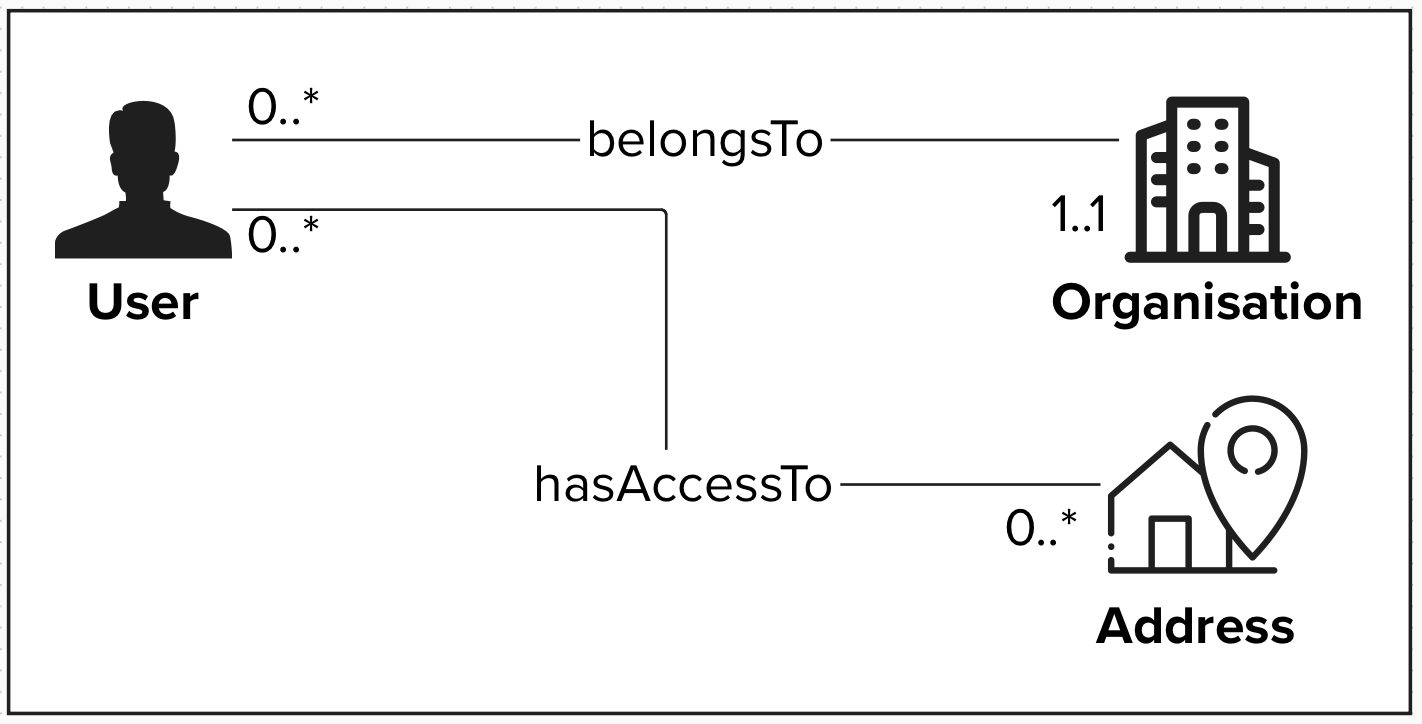3.1. User management
This section explains the general principles how user will be managed in the system. It explains the core concepts that need to be implemented.
IMPORTANT: Please note that when we talk about users, we mean API users. The system is designed around APIs which can then be used to implement user interfaces, or to be directly integrated into third-party systems.
Organisation
An Organisation represents an entity to which users or datasets can be linked to. An organisation can be an operator, MyConnectivity, a Syndic ABC, …
When creating a user other than an Application Administrator, the Administrator has to assign that user to an organisation in order to signal that the user belongs to that specific entity. This is important for two reasons:
- We want to know which organisation performed which changes to the vertical cabling database.
- Some organisation might receive an account that will allow them to manage their own users. Exact requirements on how such an access can be granted need to be evaluated and decided. (delegated administration)
When a new vertical cabling dataset is produced, this dataset will be assigned to an Organisation. The exact assignment rules will be described in the user stories linked with data production.
User
A user with a role other than Application Administrator, will always belong to exactly one organisation. The organisation to which the user belongs has following implications:
- When a user performs an action, it performs the action on behalf of that organisation.
- The user is managed by the organisation’s administrators
The exact definition of a dataset and how a dataset is assigned to an organisation will be described in dedicated user stories
Examples
Organisation Administrator
An organisation administrator can only see/manage users that belong to his organisation:
Processes Linked to User Management
Organisation Processes
The creation, modification or deletion of processes for organisations will be a manual one. The Organisations that want to be part of the system will send a request to MyConnectivity (e.g. per e-mail). MyConnectivity will analyse the request and if the request is accepted, MyConnectivity will create the organisation in the System
User Processes
Potential future use cases:
The cases described below, are cases that do not exist as of today but might become relevant in the future. These cases will not be implemented as part of a first version of the application.
Fine grade access control
In the future building managers, building owners, and other stakeholders could receive access to the System. In these cases, the users should only be able to access resources they have been assigned to. Such a access limitation could be based on Addresses, but might also be necessary on a Site, Block or Unit level.
A possible implementation of such a restriction could be to create a link “hasAccessTo”, that would link the user to the resources it is allowed to access. If such a relation exists, the system should behave exactly as for any other user, except that it will only return datasets that have been assigned to the user.




No comments to display
No comments to display